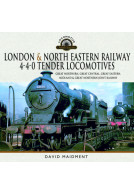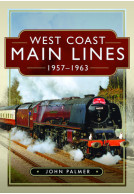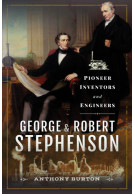Flying Scotsman (ePub)
A Pictorial History
Imprint: Pen & Sword Transport
File Size: 66.5 MB (.epub)
Illustrations: 150
ISBN: 9781473899940
Published: 3rd April 2017
Built at Doncaster works in 1923 the Nigel Gresley designed then-‘A1’ class Pacific (4-6-2) first entered service as No 1472. The new locomotive did not receive a name until it was sent for display at a Wembley exhibition in 1924, and then the name Fying Scotsman was chosen.
The Legend was born. In 1928 the London North Eastern Railway (LNER) express steam locomotive hauled the first non-stop service from London to Edinburgh and in 1934 went on to break through the 100mph barrier.
In addition to regularly hauling express trains for the LNER and later British Railways (BR), the Gresley steam icon has also travelled to, and worked passenger trains in, North America and Australia. Withdrawn by BR in January 1963 as BR No 60103, the locomotive was bought for preservation and soon became a regular sight on mainline specials and at preserved railways.
The locomotive’s history in preservation is an interesting if not chequered one, however stability is now assured as Flying Scotsman has rightly become a part of the national collection administered by the National Railway Museum (NRM). The excitement which surrounded the return to steam of Flying Scotsman in 2016, and the ongoing celebrity status afforded to the famous Gresley designed engine, are perchance confirmation of the fact that it is ‘The World’s Most Famous Steam Locomotive’. The ‘most famous’ phrase entered into locomotive preservation folklore when first broadcast by John Noakes, a BBC TV Blue Peter presenter.
A great many words have been written about the engineering specification and ‘in service’ performance of Flying Scotsman. Accordingly, this keepsake publication simply uses carefully selected images, dating from the BR steam era to the present day, to celebrate the ‘Return of the Legend’.
This publication includes a selection of QR Codes with links to items of film footage.
Recommended if this locomotive is of particular interest.
Railway Observer July 2017
What it says on the cover, a largely pictorial history with almost all pictures taken in preservation.
York Model Engineer May 2017
New to me, QR codes in the text allow access to YouTube videos or websites if you have a smartphone.
Profusely and beautifully illustrated with both B/W and colour photography, "Flying Scotsman: A Pictorial History" is an extraordinary historical account that will be an especially appreciated addition to the personal reading lists of dedicated railroading enthusiasts, as well as an enduringly popular addition to both community and academic library Railroading History collections and supplemental studies lists.
Midwest Book Review
Read the full review here.
The visual part of the work is very refreshing, a selection of 54 black and white images and 101 full colour will delight all lovers of photography.
José Manuél Rico Cortés (Mister JM) - Miniaturas JM
Superb and careful work with an impressive visual file.
Read the complete Spanish review here.
About Fred Kerr
Fred Kerr is a photographer whose lifelong interest in railways began in Edinburgh during the early 1950s and has continued throughout his life since. His family move to Northamptonshire in 1956 introduced him to the Midland Main Line where the transition from steam to diesel traction became important as Derby Works reflected the change with new locomotives being tested and introduced to service. His early ventures into photography began in 1961 but became established during his University years in the early 1970s. Taking early retirement in 1994 he has spent time working for Colin Garratt, a muse whose inspiration provided opportunities to photograph railway scenes that have proved to be historic as the railway undergoes changes in both its structures and operations.
About Keith Langston
Cheshire based Keith Langston is a widely published and highly respected photo journalist specialising in railway and other transport related subjects. His interest and vast knowledge of all things railway stem from being brought up in the North West of England as part of a railway family. Over the past 25 years he has operated as a contributor to heritage sector journals whilst establishing himself as an accomplished author in his own right.

























